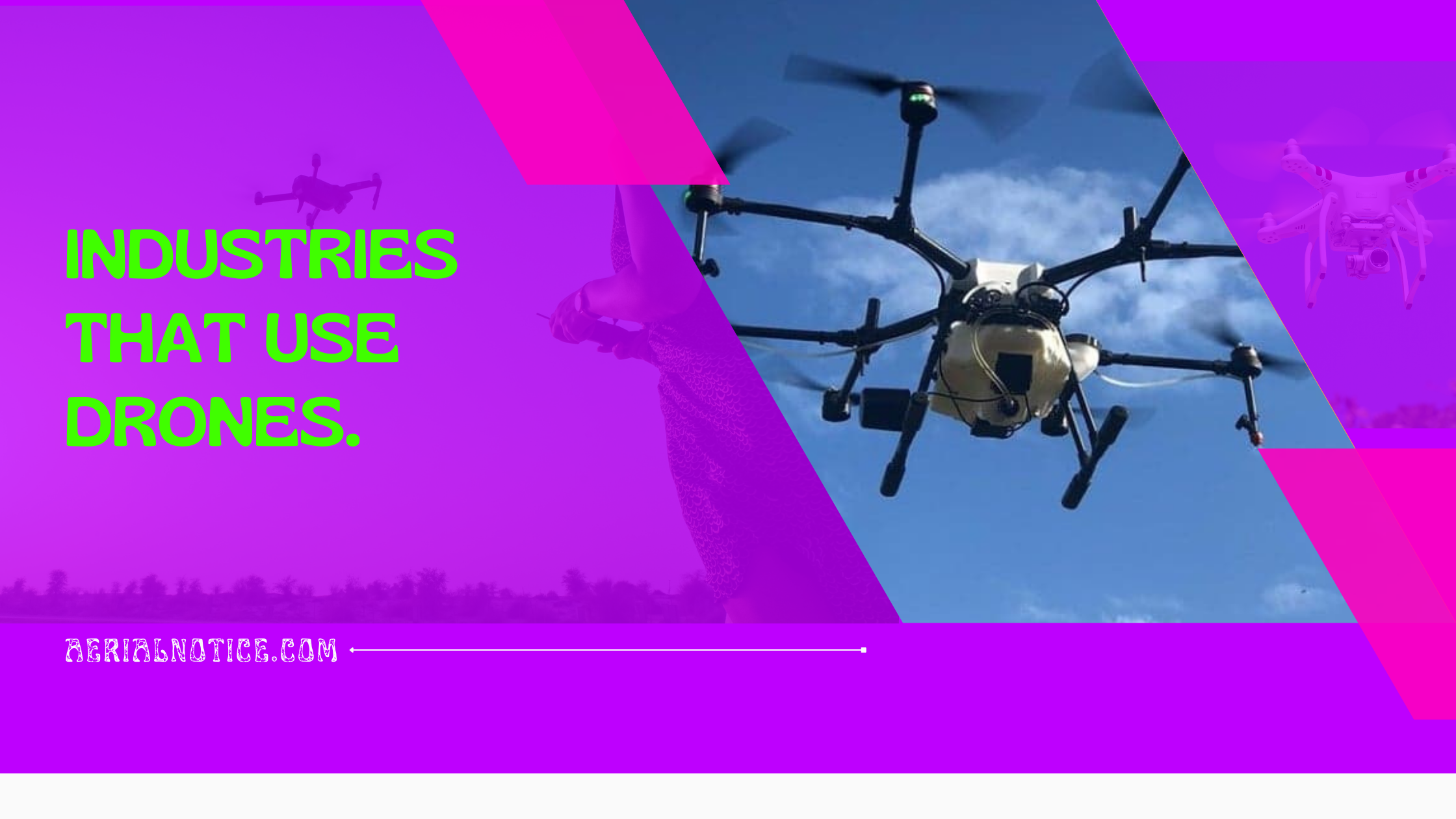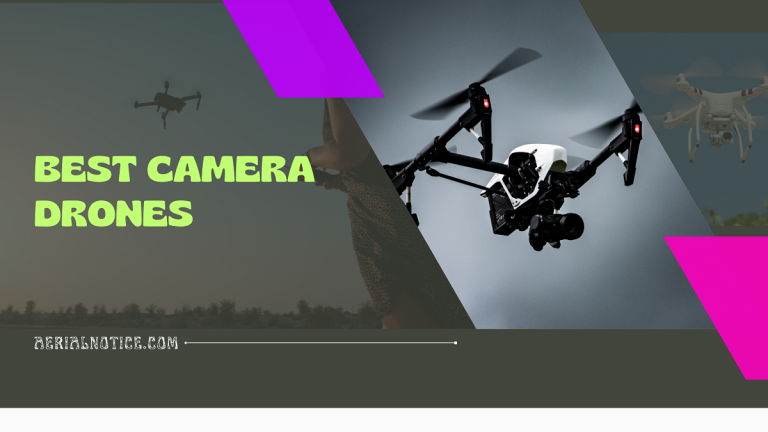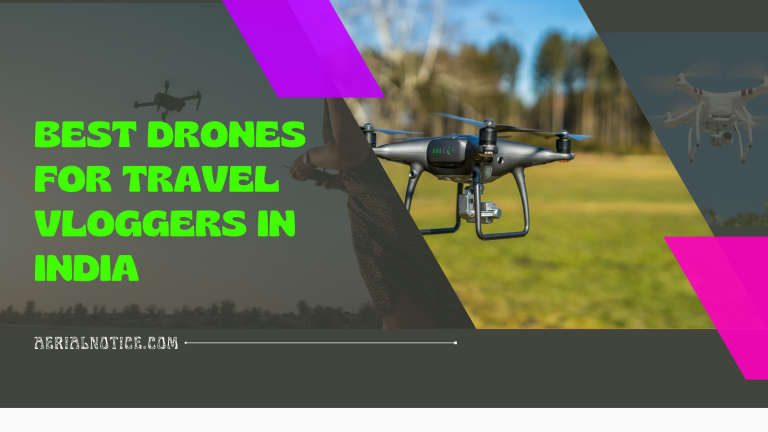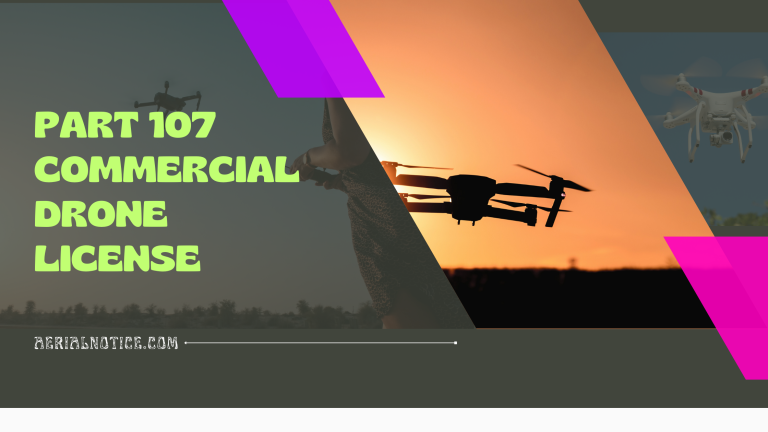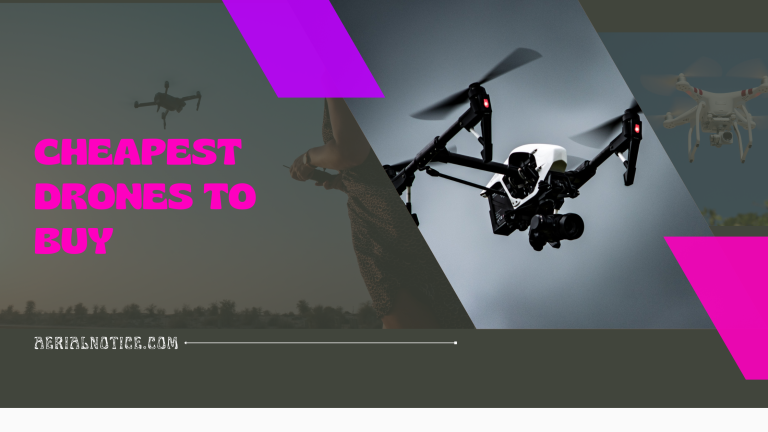Commercial uses for drones & their applications.
More and more industries are seeing commercial usage of drones, and drone technology is quickly evolving to meet industry requirements.
A recreational drone pilot of yesterday can become a certified pilot today and open doors to new opportunities that didn’t exist before five years.
Commercial usage of drones in industries such as:
- Real Estate;
- Agriculture;
- Architecture and Construction;
- eCommerce;
- Land Surveying;
- Emergencies and Rescue services;
- Media;
- Environmental monitoring helped to ease many vital tasks.
Similarly, business owners that use drones can cut their costs massively.
Let’s begin by understanding commercial drones first.
Why are drones used in numerous industries today?
The primary purpose of using drones is to take aerial footage.
With the development of drone technology, today’s drones can take transparent video footage from the air and photographs that were impossible before without spending money renting airplanes.
Likewise, there was a task in the past that was impossible to accomplish without airplanes, like delivering emergency supplies to remote places.
With the improvement in drone technology, today, drones can takeoff with emergency medical supplies or goods to deliver to places where it is impossible to reach by air.
So what is the result of using commercial drones?
It helped businesses cut costs and do complicated tasks with lesser difficulties.
In the future, the commercial usage of drones will grow as people begin to understand new spaces for drone applications.
Drones are handy, and each industry use drone in a different way. Drone pilots must be creative and find new sectors where drone usage can be beneficial.
Drone developers are researching and developing technology to fit into more industrial sectors.
In various sectors, drones are an efficient alternative to conventional aircraft.
Contrary to crewed aerial vehicles:
- Learning to fly a drone is easy. One can master flying a drone with an hour of practice;
- Getting a drone license is reasonably low cost;
- Following the FAA Part 107 regulations for commercial use is less stringent;
- Hiring a remote pilot to do specific tasks is inexpensive for enterprises.
Enough said, drones are a better alternative and excellent tool for future uses in many industries.
List of industries that use commercial drones:
Different business sectors use commercial drones for various roles. However, most tasks are related to getting aerial footage or photographs.
Each industry records aerial videos for its purpose and uses them in helpful ways.
Different drone works in different ways:
- Some drones are light and made only to take off with a camera;
- Drones used for inspecting oil pipelines require infrared cameras;
- Industrial drones can lift heavier weight more than just a camera;
- And drones in agriculture usage are developed to spray pesticides and record footage if necessary.
Today, only specific industries have adopted using drones, but we can see more widespread use of commercial drones soon.
Usage of UAV/Drones in Real Estate.
The real estate industry is big and very competitive. Agencies compete with each other to sell properties to clients.
The better presentation an agency can create of estates, the higher their chance of acquiring clients.
At least a better view of the estate allows agencies to attract more potential buyers for their property.
Before the rise of drone uses, only high-end real estate agencies could afford a helicopter to get a complete top view of an estate. They used aerial photos of an estate from a different angle for advertising.
How has the usage of drones changed the industry?
Real estate agencies can buy a drone to take aerial photos alone.
Similarly, real estate agencies can hire a certified remote pilot to fly a drone to take amazing pictures.
Either way, using a drone is significantly cheaper than renting a helicopter.
The task is effortless if an agency has its drone. Their photographer can take a simple course online to take good photographs using drones. He will be ready in a short time.
However, remote pilots are also available, and I look forward to working with agencies.
Drone for Agricultural uses.
Using crop-dusting aircraft to spray pesticides has been very popular for a long time.
Until today, many farms and the united states and numerous countries in Asia, such as the Philippines, Indonesia, and Malaysia, use crop dusters to spray pesticides.
But using a crop duster has its cons. Maintaining a crop duster and hiring a pilot to fly the actual airplane over the field is costly.
Furthermore, a crop duster has to fly low over an area to spray the pesticide properly. Passing such an aircraft very close to the ground is dangerous.
There have been multiple crashes in the past which killed the pilot.
So what is the alternative?
Drone technology has evolved; today, some drones can work as an alternative for crop dusters.
Equipping a drone with pesticides and flying a drone to spray pesticides over a precise area is an effortless task for a professional remote pilot.
Using drones to spray pesticides is very useful and not pricey at all.
Remote pilots do their job without endangering their lives and operate a drone using the control from far away.
Using drones to spray pesticides over a crop field is much more efficient than crop-dusting aircraft.
A crop-dusting drone can be loaded quicker with pesticides than a crewed airplane. And these drones can fly over an exact location and do their job, unlike aircraft that have to take off from an airfield and fly low to target spray pesticides over the desired area.
Using GPS, drones fly precisely over the location where pesticides are necessary, and they do the job accurately.
As more people are getting used to drones, they are figuring out more drone applications in the agricultural industry.
Imagine using drones to detect dying crops in a field. Monitoring crops is more comfortable and quicker now.
Drones can be loaded with water r fertilizers to spray on farmlands and save the crops.
Likewise, instead of manually monitoring crop conditions, drones can do the task quickly and save time for farmers.
People are using drones to monitor livestock and collect essential data to help with agricultural growth.
Architecture and construction industry.
Architectural firms and construction contractors get massive benefits from using drones.
Now, drones can have better aerial photos from various angles of a property.
Using those images, they can create better designs of the structure. The drone images can aid in predicting how the facility will look and how well the design will fit in the area with other fabrics.
This aerial image and footage applications were unavailable before the invention of drones.
Now that drones are accessible by anyone and getting a remote pilot certificate is relatively easy, an engineer can quickly learn to fly a drone and become better at creating structure designs.
Drones for eCommerce delivery.
Delivery is not an industry by itself. But multiple businesses rely on delivering commodities.
With the rise of internet users and a boom in the eCommerce sector, we can expect that delivery using drones will become common in the future.
Ecommerce giant like Amazon is already delivering their products using drones, but it is still in an exploratory phase.
Due to the fact a drone can carry only a limited amount of weight, the use of drones for delivering products is growing slowly.
However, drone technology is developing quickly, and we can expect to see drones capable of delivering heavier goods in the future.
Thus we can expect to deliver food and light commodities, a more common thing in the next few years.
Use of drones in rescue and emergency Services.
Drones are a great help to locate someone in case of emergency or after a disaster.
Instead of using the traditional method of search and rescue to locate individuals during a calamity, drones are better for the task.
Drones can quickly fly to places where human access is not accessible during or after disasters.
Unlike traditional search and rescue methods, drones can cover a large area and give footage of vast regions in a shorter time. Thus locating lost persons or animals in a broader site is effortless using drones.
Furthermore, drones deliver emergency medical supplies to stranded people in the disaster-struck area more conveniently than ever before.
For emergency response where humans can’t reach or are not natural during a disaster, a drone can fly there faster with essential medical goods and some food to survive.
The victims can temporarily use the medical supplies to survive until actual help arrives, which takes a while to less accessible places.
Media.
To cover news in remote places or get footage of disaster-struck areas, news reporters had to fly over the site using a helicopter.
Not all news channels or media can afford a helicopter to cover the news.
But drones today, making news reports using detailed video and aerial photos, are inexpensive.
Local news reporters can get a drone and a remote pilot license to use drones for media coverage.
Drones can fly to tighter places than helicopters and record videos of news that a helicopter cannot always cover.
Land surveying.
Surveying land is a challenging task. Surveyors usually have to travel miles and note the physical characteristics of hundreds of acres of land.
For various reasons, land surveyors indicate elevation, water bodies, mountains, lands, and plantations.
Land surveying is crucial for determining ways to develop the land.
In countries like the United States, land surveying is typical because surveyors play a significant role in developing and designing roads, utilities, and landscaping.
But these tiring tasks of land surveyors got some pace with the use of drones.
Land surveyors didn’t have the chance to get aerial views of hundreds of acres before. Now they can clearly understand a landscape using drones in minutes, which will help them work more efficiently.
Having aerial footage will allow land surveyors to design their plan and improve it further because by using drones footages, they have a better image of the land.
By having a drone and getting a pilot’s license, a drone surveyor can step into the next step of his profession.
Environmental monitoring and conservation.
Farmers can use drones to monitor crops, aiding in monitoring ecological environments.
Drones can track wild animals and can do the work without disturbing wildlife.
Professionals can use drones to fly over wildlife and tach the wild animal’s migration and other natural matters to prevent wildlife.
Likewise, drones can help with environmental monitoring and conservation.
Future uses of drones:
As time passes, drone technology will develop further. More and more businesses will begin using drones.
Industries will learn new ways to use drones in their sector and ease their tasks.
Industries that do not use drones today will find a job where a drone can perform efficiently, allowing new sectors to adopt drone uses eventually.
In the future, many industries and sectors will begin commercial usage of drones.
However, agriculture and eCommerce delivery industries will adopt drones for more commercial usage than any other sector.
One other future use of drones is for wireless internet access. The idea is to launch a fleet of drones flying at very high altitudes for months. Each drone will be solar-powered and can fly for months. These drones will communicate and provide internet access to developing countries.
This technology is underway, and we can expect to see this drone technology soon in the future.
How can you use a drone for commercial purposes?
Assuming you are a recreational drone pilot thinking of making some extra cash using a drone, you must first get your remote pilot airman certificate.
Without your remote pilot airman certificate, you cannot fly drones for commercial usage.
Or you can fly a drone below 55 pounds under the supervision of a certified remote pilot.
Having a drone pilot license is a privilege and opens doors to opportunities.
As the commercial usage of drones is on the rise, you can choose from multiple industries to find work.
You will have a better opportunity for success in an industry if you are already a professional in a specific sector and find new ways to use drones.
But first, you must get a drone pilot license. Getting a drone pilot license is simple and doesn’t take long.
Next, you must register your drone and use it for commercial purposes.
Having a drone pilot license will benefit you a lot as more industries in the future will absorb drone usage.
If you don’t know where to begin, you can read this article to find out how to make money using drones.
Which drones are best for commercial usage?
Most commercial usage of drones is related to taking photographs or video footage.
Buying a drone that can give fine video quality is the best drone for starting a business.
In any industry, having a drone that gives better quality video than your competitors benefits you.
If you are starting to use your drone commercially, I suggest buying a drone between 1000 to 2000 USD.
You can choose a drone for over 2000 USD if you are a professional.
But depending, choose a drone depending on the purpose of use.
Drones are an inexpensive and handy tool to improve performance in numerous industries if appropriately used.
If you are using a drone only for video footage, buying a DJI phantom four will do the task better than any other drone.
It is a drone that is inexpensive and produces excellent quality video.
But if you want a drone that can serve other industries where the drone has to do more than recording videos, you can pick drones like DJI S1000 or DJI S900.

